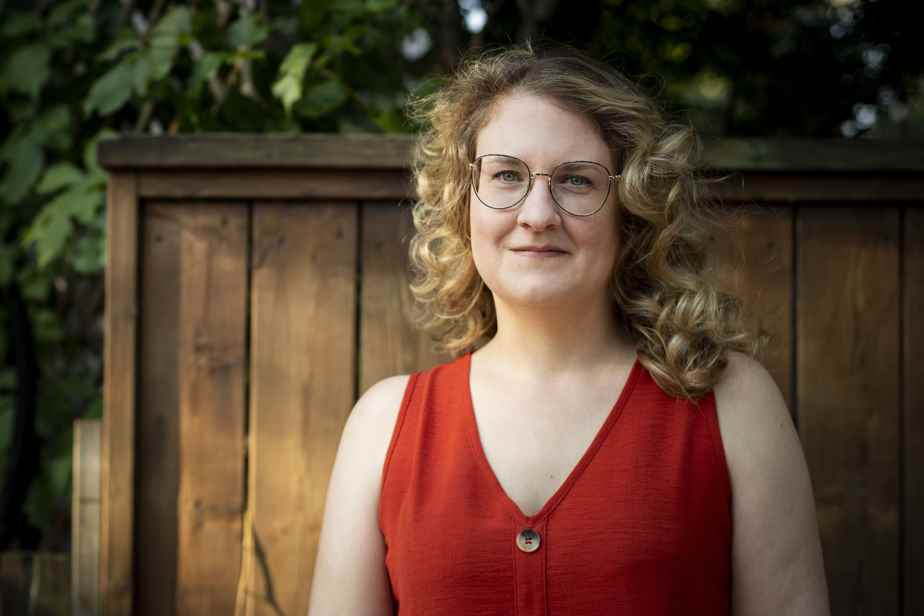Posted at 5:00 a.m.
“If I hadn’t confided in my beautician, I wouldn’t have a uterus today,” denounces Valérie Marchand. Suffering from uterine fibroids, the 38-year-old discovered during a conversation that she was eligible for fibroid embolization, a minimally invasive operation to treat her condition, rather than having her uterus removed.
In Canada, one-third of hysterectomies — major operations to remove the uterus in women — are performed to treat uterine fibroids, according to the Canadian Association for Interventional Radiology (CAIR). Of this number, 40% of women undergo it without considering resorting to another, less invasive treatment.
Uterine fibroids are non-cancerous growths that grow from the muscles of the uterus. About 70% of women 40 and older will develop it, says the Merck Medical Handbook.
While most are asymptomatic, approximately 50% of black women and 25% of white women will experience symptoms that affect their quality of life, such as heavy bleeding that can cause anemia, pain, bladder compressions or gut or impacts on sexuality and fertility.
“That’s gonna be it”
In 2019, Valérie Marchand, then 36 years old, ended up in the emergency room because she could no longer urinate. The cause: a uterine fibroid that compressed his urinary tract.
From her first meetings with a gynecologist, the option of embolization of her fibroids was ruled out because she had “no heavy bleeding”, recalls Valérie Marchand. She then decided to “endure her condition” since the drug options were not suitable for her (due to significant side effects and because they did not solve the problem). Her trick: riding a stationary bike when she felt a urinary blockage occurring.
But at the end of 2021, Valérie Marchand again found herself in the emergency room. “I couldn’t live like that,” she says.
She again met her gynecologist last January. His fibroid had grown. The choice fell on a hysterectomy, a major operation followed by six to eight weeks of convalescence.
At no time did she mention embolization to me. It was: “Do you want to solve the problem? That’s gonna be it.”
Valerie Marchand
“I went home crying,” she adds. I am not someone who wanted a child at all costs, but the fact of taking away the possibility disturbed me a lot. »
Alternatives
With the exception of medication, Quebec women have three options for treating their fibroids: hysterectomy, myomectomy (surgical removal of fibroids while preserving the uterus) and uterine fibroid embolization (UFE).
In 2021, 4,395 hysterectomies were performed in Quebec, 6,964 myomectomies and 1,093 embolizations, according to data from the Régie de l’assurance maladie du Québec (RAMQ).

Practiced by interventional radiologists in seven hospitals in the province (located in Montreal, Quebec, Lévis, Sherbrooke and Longueuil), embolization consists of injecting small particles to block the blood flow that feeds the fibroids, causing them to shrink. It is a minimally invasive intervention, which takes place in less than an hour, and which requires one to two weeks of convalescence. It provides complete or partial symptom relief for 78% to 94% of patients, according to CAIR.
“Fibroids melt,” says Dr.D Véronique Caty, interventional radiologist who performs UFEs at Maisonneuve-Rosemont Hospital. “I often give the example of a grape filled with juice, versus a raisin. That’s what happens. »
“Very last option”
While waiting for her hysterectomy, Valérie Marchand confides in her beautician. She knows Carine Ricci, another woman who recently struggled to successfully receive an embolization, rather than a myomectomy. “I was in shock,” says M.me Merchant.

PHOTO SARAH MONGEAU-BIRKETT, THE PRESS
Carine Ricci recently fought to receive an embolization rather than a myomectomy.
The Montrealer recontacts her gynecologist, requests an appointment in radiology and quickly learns that she is eligible for embolization.
I do not understand that a gynecologist recommends a 38 year old woman who has not had children to have a hysterectomy. That should be the very last option!
Valerie Marchand
The Dr Togas Tulandi, Director of the Department of Obstetrics and Gynecology at the McGill University Health Center, and Dr.r Dominique Tremblay, vice-president of the Association of Gynecologists and Obstetricians of Quebec, acknowledged that there was a lack of knowledge of and access to UFE services.
“There is really a problem of visibility and accessibility to information”, also believes Aïssatou Sidibé, founder of Vivre100fibromes. Although not all women are candidates for embolization, all should, she believes, be informed in order to be able to make an informed choice.

PHOTO MARCO CAMPANOZZI, THE PRESS
Aïssatou Sidibé, founder of Vivre100fibromes
Valérie Marchand received her embolization in May. Since then, she has had no more urinary problems. She will know in four months if the operation was a complete success. She and Carine Ricci also recently set up the Parlons embolisation Facebook page to share information on the practice.
“I would just like to make sure that no one else goes through the same bumpy journey as me, confides Valérie Marchand, where I did not feel completely informed. »
Learn more
-
- 41,000
- Number of hysterectomies performed annually in Canada
Source : Canadian Journal of Obstetrics and Gynecology
- 4395
- Number of hysterectomies performed in Quebec in 2021
Source: Quebec Health Insurance Board

